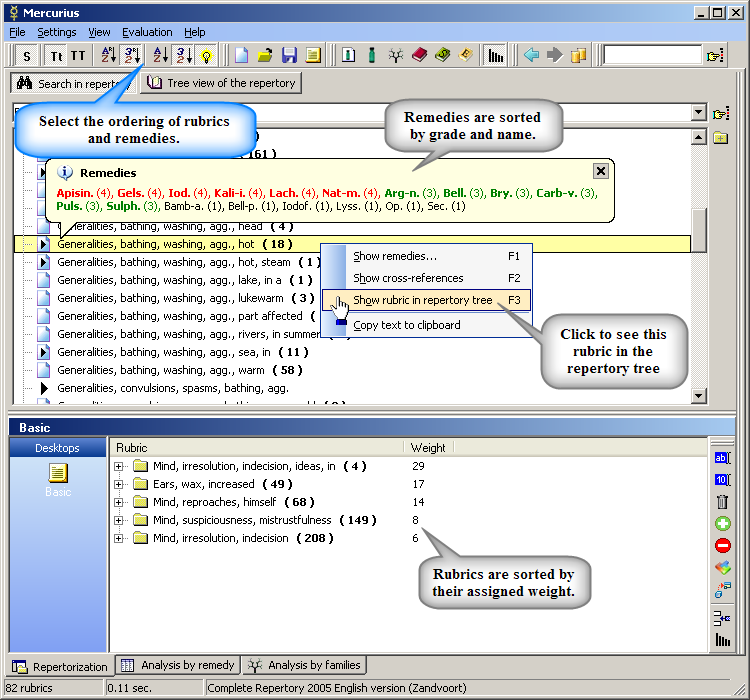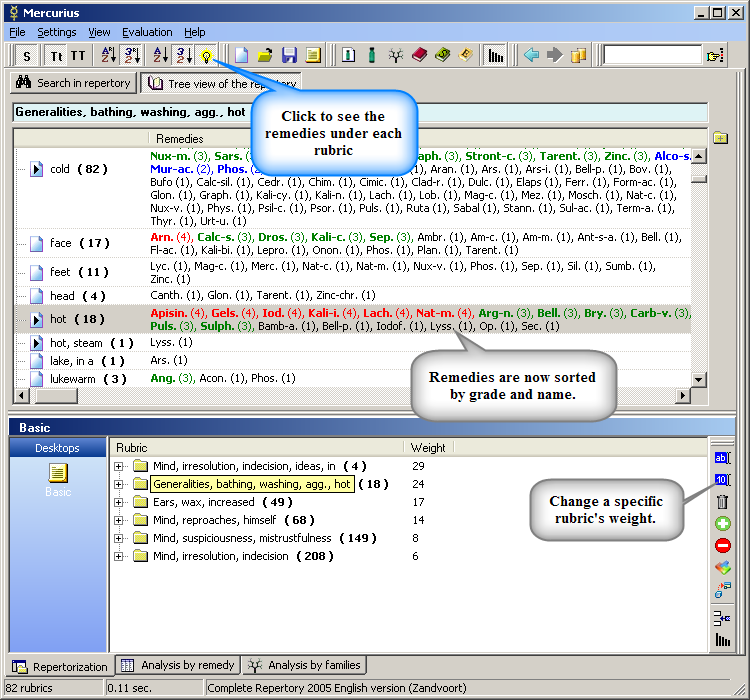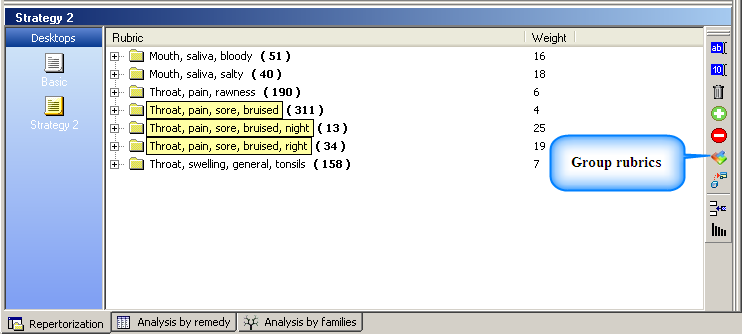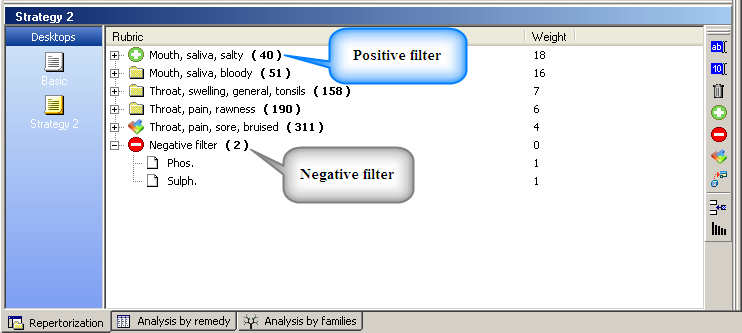Working with symptoms
The symptoms in the desktop can be ordered either in the order of their name or their weight, you can select your preferences from the upper tool bar or from the "Settings".

In the tree structure, you can choose to see the corresponding remedies under every symptom. The remedies are ordered by grade in descending order and by name in ascending order, depending on the active settings.

Modifying the weight of the rubric
The key to successful prescription lies not only in selection of the symptoms, but also in optimal settings of their weights. The more important the symptom the higher weight it should receive. You can change the weight of a specific symptom by clicking the "Modify weight" button and typing the value in (see picture above).
By default, the weights of the symptoms are assigned automatically based on the automatic remedy weights model. When you go to Options in Mercurius, you will see that the current automatic symptoms weight model is "30 - 1".

The model works on the assumption that the symptom containing less remedies is more valuable than the symptom containing many remedies. To give an example, "Head pain" symptom containing hundreds of remedies is of little use, as opposed to "Head, pain, temples, sitting, while, amel. " containing only 8 remedies. (in Complete Repertory 2005)
The model "30 - 1" means that the most valuable symptom (containing only one remedy) receives weight 30, while the symptom containing infinite number of remedies receives weight 1. So it is an exponential function defined in the X range 1 - infinity, with values starting at 30 and converging to 1.
This model is "thinking for you" and thus saving your time and energy but you can either turn it off or override its values as you see fit. (turned off, every symptom receives a weight of 10, by default)
Grouping symptoms.
Grouping of the symptoms is an important tool for working with the symptoms, It allows creation of so called superrubrics, which contain the remedies from all the similar or almost identical symptoms we decide to involve.
For instance, we can group all rubrics involving sore pain in the throat. These rubrics occur 3 times, which is quite a lot taking into account their lower importance in the case. Merging them into one symptom helps to avoid distorting the case because of overrating certain group of symptoms. (the other solution is lowering the weights of the symptoms)

Mercurius marks the grouped symptom by a special icon. You can ungroup the rubric anytime by clicking the "Expand group rubric" button when the rubric is focused.
Filtering symptoms
If we have a key symptom in our case, we can apply a positive filter on it.
Positive filter means that only those remedies, present in a symptom with positive filter, will be taken into evaluation.

Negative filter works in a similar way, with the difference that remedies under the negative filter will not be considered in the evaluation. We can also add remedies under a negative filter by right-clicking the remedy name from the evaluation column or from the remedy list and choose to "Delete" the remedy.